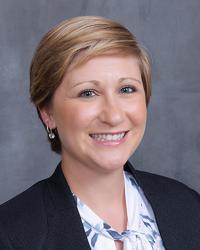Are Growing Pains a Real Thing? The Truth About Leg Pain in Children

Growing pains — are they a legit rite of passage for kids or something that’s always been a go-to explanation for those nagging twinges and aches in your child’s legs? Katie Halyko, MD, UnityPoint Health settles if growing pains are a real thing, at what age kids are usually affected and how to help your child get some relief.
Are Growing Pains Real?
First thing’s first, Dr. Halyko says, “Growing pains are definitely real.”
What Causes Growing Pains?
Growing pains are not necessarily a sign of growth spurts. They typically happen during a time in childhood when kids are experiencing slow and steady growth. While children are always growing, they grow the most during the first year of life and during puberty.
“Part of the problem is we don’t understand exactly why they’re happening, so it’s hard to give parents another reason for it. However, there’s no data to support that growing pains occur during peak growth times for kids,” she says.
“One trend shows that kids who have joint hypermobility (known as ‘double jointed’), who can move a joint beyond its normal range of motion, are more likely to have growing pains. Kids’ ligaments are stretchier by nature, which could be where some of this is coming from, but we don’t have scientific proof,” she adds.
How Long Do Growing Pains Last?
Growing pains mainly affect elementary-aged children and they typically end around age 10.
“That’s why it doesn’t make sense for growing pains to be associated with growth spurts, because that’s not the age when they’re typically happening,” Dr. Halyko adds.
What Do Growing Pains Feel Like?
Growing pains feel like an aching, sore pain. They’re usually felt in the lower extremities, like the legs, although there are some cases of upper extremity pain, in the arms, as well.
They can strike in the evening or during sleep.
Dr. Halyko says, “They seem to follow days of really hard activity and should be felt in both legs, but they don’t have to always occur on both sides and at the same time, every time.”
How to Help Relieve Growing Pains in Legs
If growing pains are waking up your child at night, Dr. Halyko says caregivers can massage their child’s legs until they feel better. In addition, the following can help with growing pains:
Dr. Halyko recommends resorting to medication last, because episodes of growing pains don’t last long for most kids, and other ways to alleviate pain usually provide enough relief.
“In instances where a kid is getting them regularly or is having a particularly bad day with growing pains, then you could try ibuprofen or Tylenol before bed to help with any overnight aches,” she says.
Can Adults Get Growing Pains?
The short answer is no. “If adults are having pain in their legs, it’s likely from overuse,” Dr. Halyko says.
What’s the Difference Between Growing Pains and Osgood-Schlatter Disease?
Osgood-Schlatter disease (also known as Osgood-Schlatter syndrome) is a condition that primarily affects older elementary-aged children and teenagers who are physically active, especially in sports that involve running and jumping.
“It’s most common in kids and teens during puberty when they can experience growth spurts. It’s basically the tendon in the kneecap pulling on the growth plate of the shinbone, which can cause inflammation and pain from overuse,” Dr. Halyko says.
Osgood-Schlatter’s disease symptoms include:
- Pain and swelling
- Bump or lump
- Tenderness
Dr. Halyko assures that Osgood-Schlatter’s doesn’t cause lasting pain or harm — and won’t lead to broken bones or tendons either.
“It’s just uncomfortable, so you treat the symptoms,” she says.
Treatment for Osgood-Schlatter’s disease typically involves rest, applying ice to the area and anti-inflammatory medication to reduce pain and swelling. The pain goes away for most kids once they’re finished growing.
When to Worry About Leg Pain in Children
Dr. Halyko says if your child is experiencing any of these symptoms, along with an ache or soreness in their legs, it’s time to talk to their doctor:
- Swelling
- Redness
- Abnormality on an exam
- Fever
“In these cases, it’s no longer growing pains we’re dealing with,” she adds.
“I think parents get worried because bone pain can be associated with more serious conditions. For example, if you Google, ‘leg pain,’ leukemia will pop up as a possibility. Caregivers should know that kids will have other symptoms if the cause is truly leukemia, like a long-lasting fever or other signs of what seems to be a virus,” she says.
“That’s when we’ll do a work-up, but if leg pain is your only symptom, it’s probably not leukemia,” she assures.
If your child is experiencing growing pains, or any type of concerning bone pain, contact their provider to get them checked out and feeling better.
Medically Reviewed By

Kathryn Halyko, MD
Pediatrics
